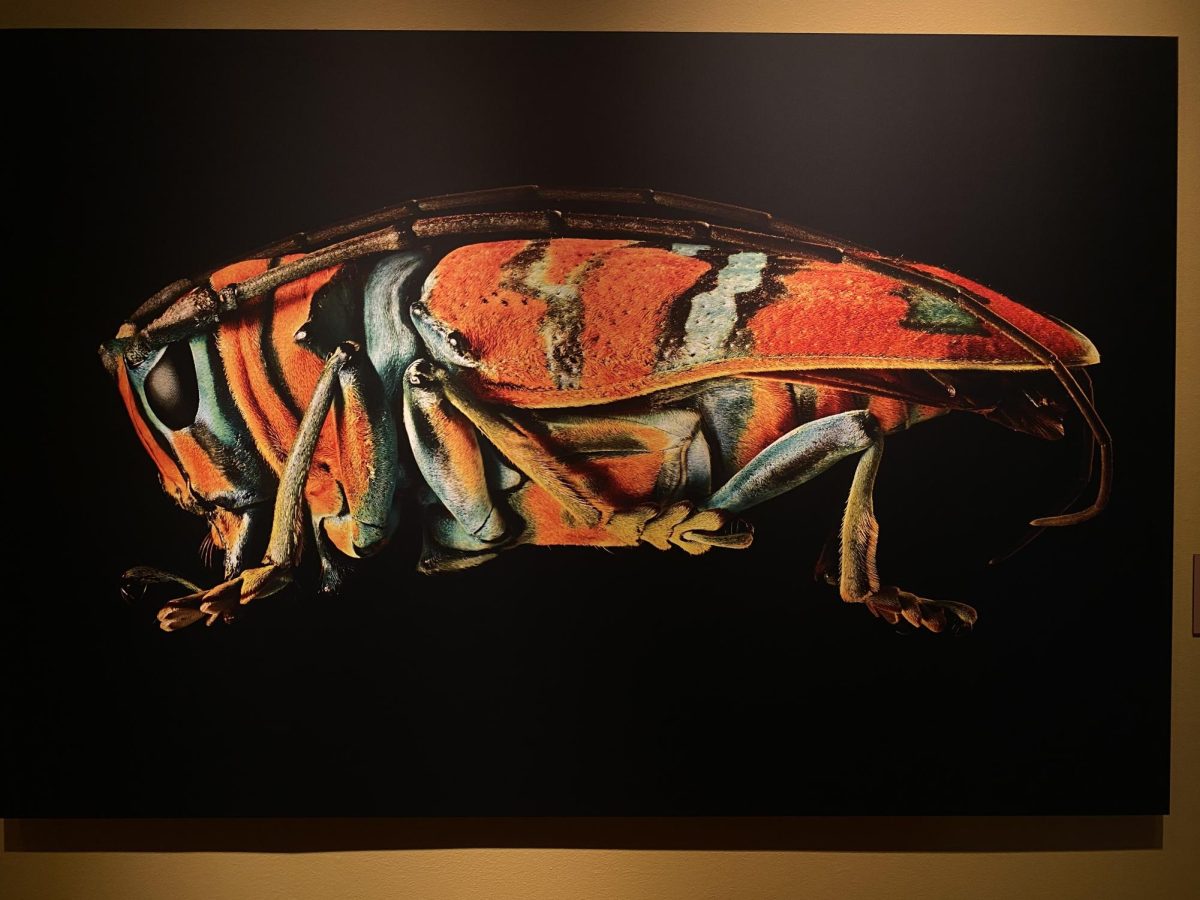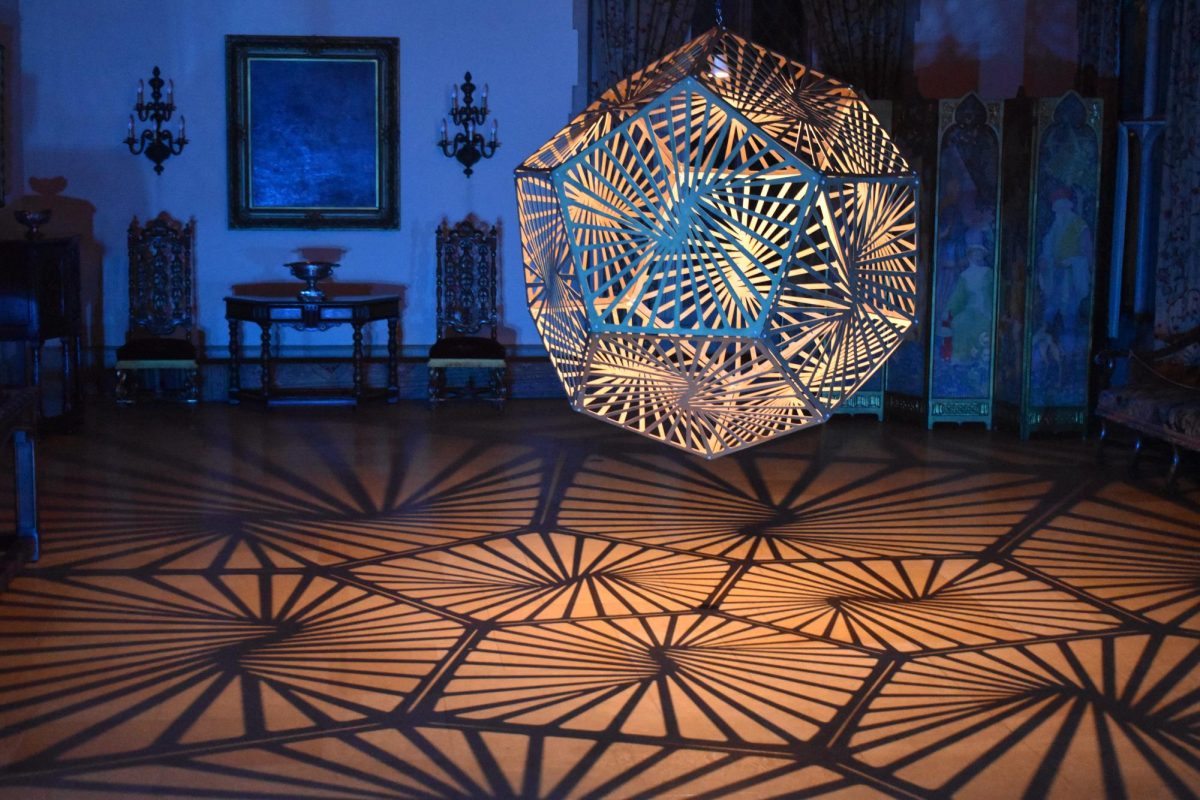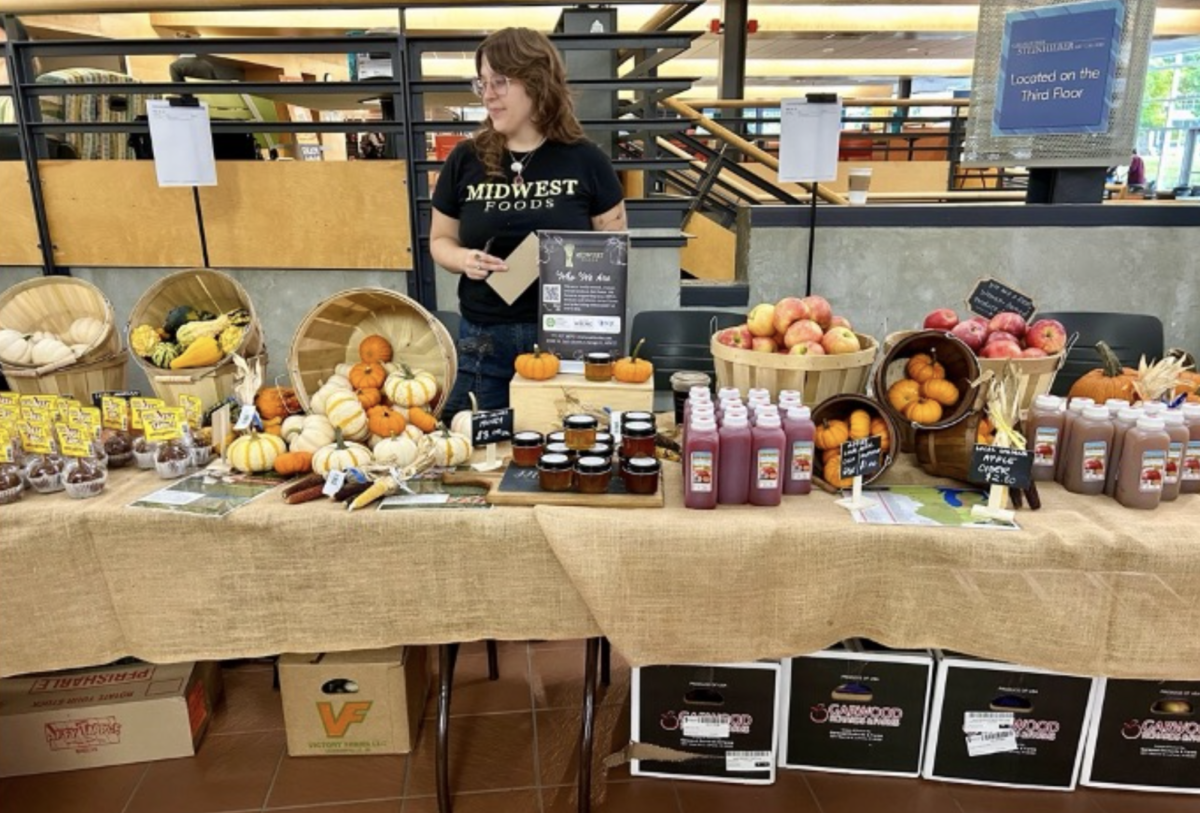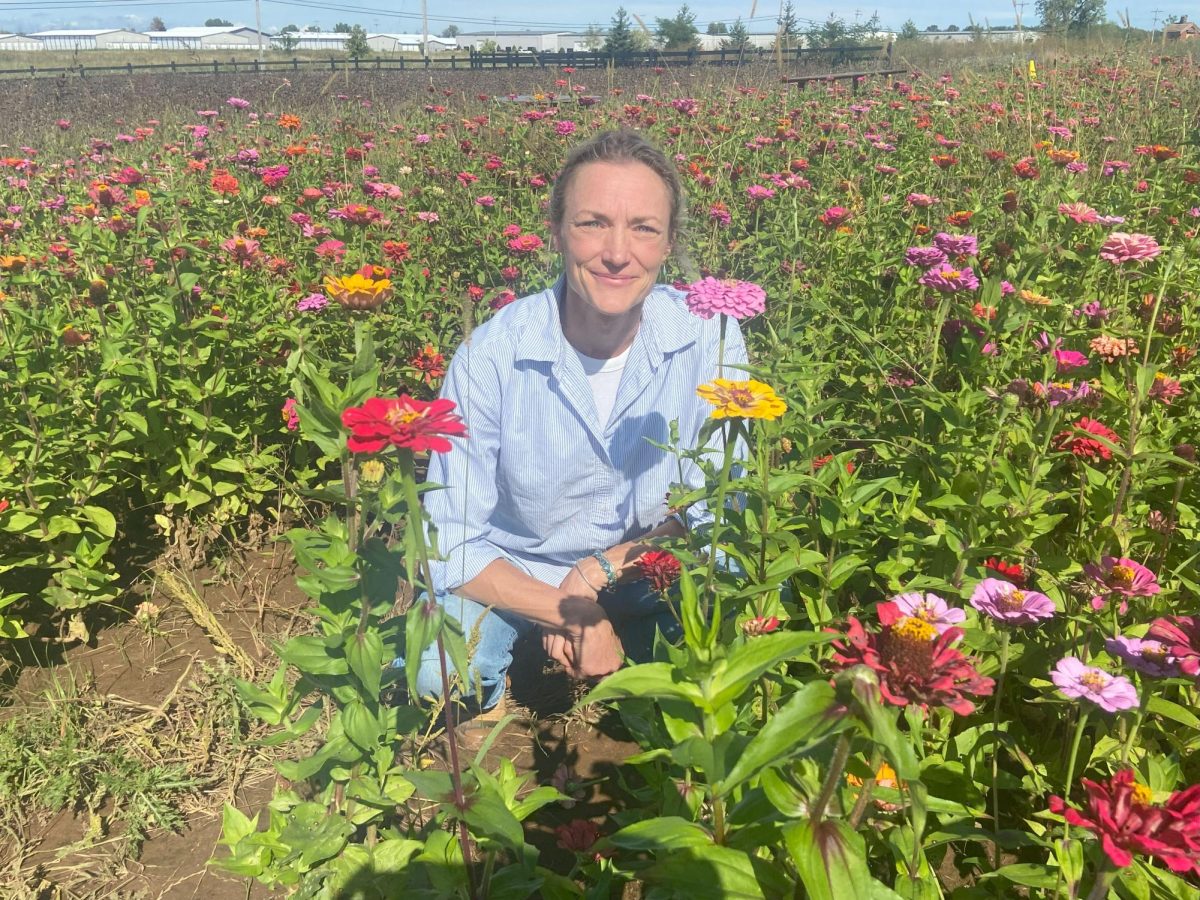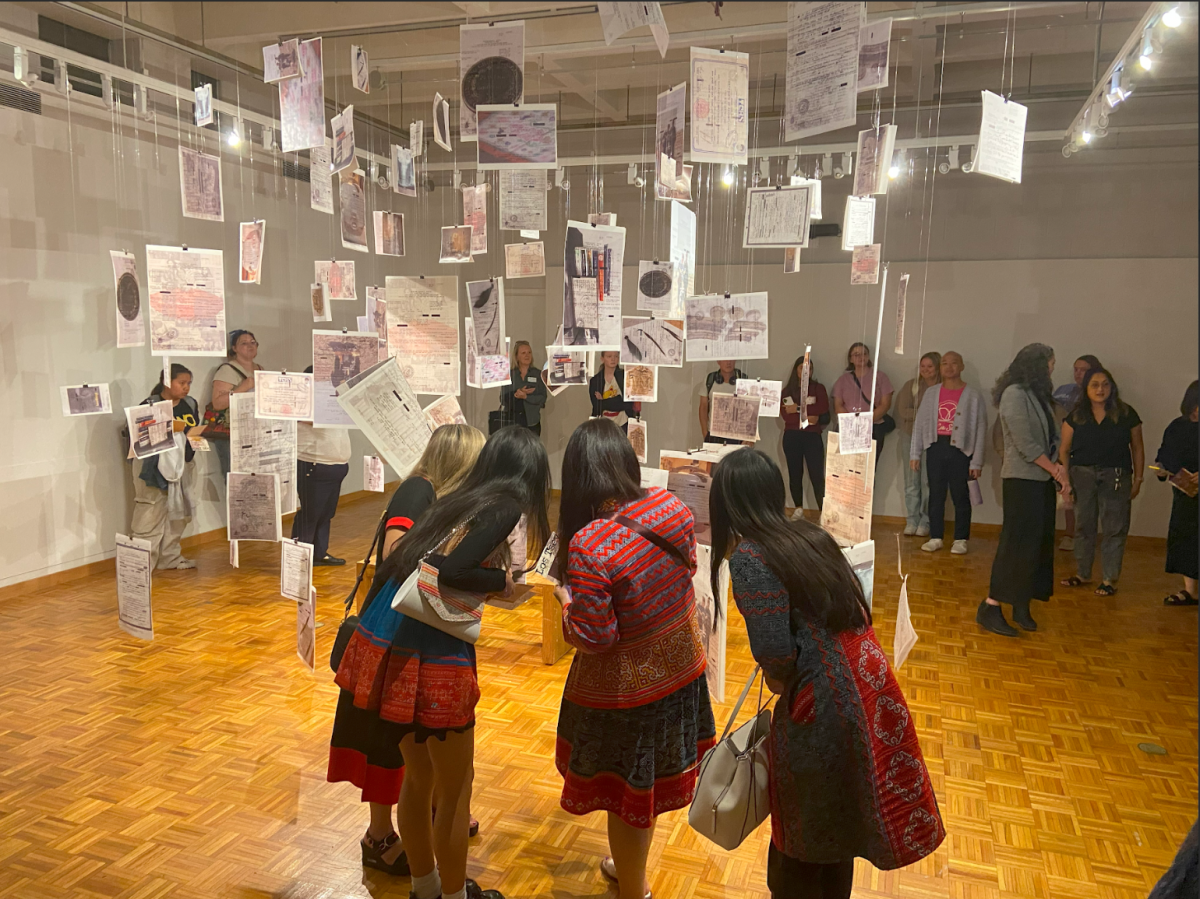The Paine Art and Garden Center is showing tiny insects in a big way with their dual exhibitions, “Microsculpture: The Insect Portraits of Levon Biss” and “A Cabinet of Wonder: Artworks by Jennifer Angus,” which will run through Oct. 13.
“Both (artists) do have the similar notion of wanting to familiarize us with insects and make us maybe see the wonder of insects instead of being afraid or intimidated by insects,” executive director of the Paine Aaron Sherer said.
British photographer Levon Biss’ “Microsculpture” consists of large-scale images up to 9 feet tall showing insects in ultra-high detail. His portraits include bright hues and velvet-like textures that highlight the hidden structure of different insects.
“This turns it into beauty, and what this artist has done here has made them look beautiful or alien. You wonder, is that something from the earth?” said one viewer from Milwaukee, Desiree Pasbrig.
Another viewer, Scott Stebbins of Iowa, shared the same sentiment despite not expecting to see an art installation at the Paine.
“I was quite delighted,” he said. “I thought the photographs were really amazing.”
Each image is composed of 8,000 photographs, each taken under strobe lights, to show the high-resolution detail at such a large scale.
Also included alongside Biss’ work are four display cases of insects found around the UW Oshkosh campus to give viewers a better understanding of what species live in the area.
Biss’ breathtaking images have been shown across the globe, including at the American Museum of Natural History in New York, where he spreads awareness of the growing insect decline.
CBS reported in February that scientists estimate a 40% global decline in insect population, and that a third of them are endangered. Researchers at the Florida Museum of History said this decline can have hefty consequences for humans because of the services insects provide, including removing waste, pollinating crops and being at the base of the food chain.
UW Madison design studies professor Jennifer Angus further explores human appreciation of insects through her exhibit, “A Cabinet of Wonder,” which combines miniature settings in bell jars with preserved exotic insects as a nod to the uptick in scientific discovery during the Victorian era.
Sherer said the key part of Angus’ exhibit is her personification of insects by showing them studying, traveling, dancing and performing other activities.
“You can almost imagine them having personalities and doing tasks,” Sherer said.
This is one way to become more comfortable with insects, Angus said.
“One of the ways to gain empathy and understanding towards insects is to imagine them leading lives parallel to our own,” she wrote in her artist’s statement.
Showing insects in human-like settings has shown to give viewers a more empathetic view toward insects, Sherer said.
“She wants to kind of give them stories, so you can almost envision them having lives and friends and family members,” he said. “It makes you feel a bit more warm toward them.”
The insects Angus used were collected either through farming or by local indigenous people, providing them a livelihood. She does this as an attempt to preserve habitats for both insects and indigenous people.
Many of Angus’ installations have been showcased across the country, with ArtDaily describing her as “one of the top contemporary installation artists in the country.”
Angus’ and Biss’ work will be shown at the Paine through Oct. 13. Available hours to view the exhibits can be found at thepaine.org.


